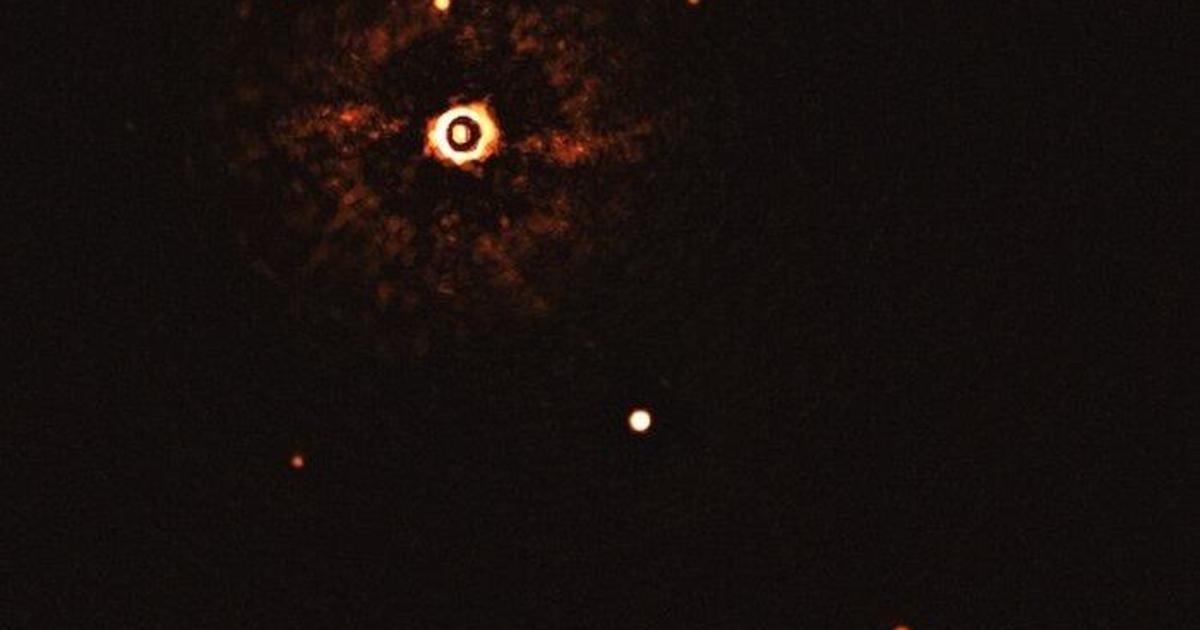
Scientists have captured the first direct image of a solar system that closely resembles ours. The new image is a kind of family portrait, showing two giant exoplanets orbiting a young, sun-like star some 300 light-years away.
The image was taken using the European Southern Observatory Very large telescope, located in the Atacama desert in Chile. According to a new study in Astrophysical Journal Letters, the system will help astronomers better understand how our solar system formed and evolved.
The star, known as TYC 8998-760-1 and located in the southern constellation Musca, is only 17 million years old, what researchers called a “very young version of our own sun.” Comparatively, the sun is approximately 4.6 billion years old.
Both planets orbiting the star, named TYC 8998-760-1b and TYC 8998-760-1c, are suspected of being gas giants, meaning they are primarily made up of gases like helium and hydrogen. However, they are much farther from their host star than our gas giants Jupiter and Saturn, at distances of 160 and approximately 320 times the Earth-Sun distance. They are also much heavier than gas giants in our solar system.
The image shows the two planets, which appear as two bright spots of light, distantly orbiting their parent star, located in the upper left corner. Because they formed so recently, they still glow bright enough to be seen from Earth.
ESO / Bohn et al.
It is the first time that astronomers have observed more than one planet in orbit around a sun-like star. Only two similar systems have been observed before, both with stars only different from ours.
“This discovery is a snapshot of an environment that is very similar to our Solar System, but at a much earlier stage in its evolution,” lead researcher Alexander Bohn, a doctoral student at Leiden University, said in a press release. in the Netherlands.
Co-author Matthew Kenworthy, an associate professor at Leiden University, said these kinds of direct observations are crucial in finding planets that can support life. “Although astronomers have indirectly detected thousands of planets in our galaxy, only a small fraction of these exoplanets have been directly photographed,” he said.
According to NASA, only a few dozen exoplanets discovered so far have been directly photographed. Scientists hope that more research will reveal whether the young planets formed at their current location or migrated from somewhere else, and how they might interact with each other.
.